Bamboo
Introduction
It is the biggest grass in the world, it is the food of panda, and the shoots taste really nice in stir-fry. This was really all I knew about bamboo before coming to Sabah. Well, working with Arkitrek changed that, particularly through working on the Lupa Masa project. I am fascinated by the fast growth rate, negligible embodied energy, and extensive applications. In many instances it can be a viable substitute for hardwoods. When striving to build with minimal environmental impact it is the wonder material!
Genus of bamboo
Current estimate is that there are 49- 59 genus of bamboo in the world, between 800 and 1000 species, growing between 46°N and 47°S, in altitudes of up to 4000m. In Sabah, there are 35 known species of 10 different genus. Many of these are still lacking in research and one is still unnamed.
Harvesting
For construction, bamboos are deemed mature between 3- 5 years, or when there are white spots on it. For craft applications young bamboo is often needed. Bamboo should be cut during the dry season, so that there is less moisture in it. Folk law dictates that bamboo should be harvested around the full moon, 3 days before at the earliest and 3 days after at the latest. Apparently this is a widely held practice, with consensus not only from Sabah but also Costa Rica, Columbia and Indonesia.
Is this just common myth, or is there scientific basis for this belief?
It is thought that the full moon draws the moisture and starch from the bamboo, therefore without starch to feed on, bugs do not lay their eggs in the bamboo. The gravitational pull of the moon is strong enough to create tides – is it strong enough to make such a difference to the starch levels in bamboo? This theory is often contended.
Preserving
Irrespective of harvesting time, bamboo must still be treated against wood boring insects and fungus. Again many local methods exist. Standing it against a tree, raising it out of contact with the ground and leaving it to dry for 4 weeks is often done. It is said that the skins of salak fruit can be rubbed on the bamboo to preserve it, or that the bamboo can be soaked in a concoction of natural materials, including Neem leaves.
In Sabah, the method of soaking it in a muddy puddle for two weeks is practiced. More commercially the bamboo is treated with Boron, a chemical element.
In Nepal, The Adobe and Bamboo Research Institute (ABARI) has developed a means of pressure pumping the bamboo with borax. It is a fast and effective method. The Institute is currently testing a Neem compound as well as cow urine, which is used in Napal as a preservative for timber. http://abari.org/treatment
Construction
In Sabah, ‘Poring’ bamboo (Gigantochloa levis) is the most suitable for construction. As its scientific name suggests it has a large cross section. Buluh betung (Dendrocalamus asper) is also noted as being strong and durable and good for construction, although it is difficult to find in Sabah (there is a record from Long-Pasia by Tony Lamb). Tamalang or Tambalang (Bambuso vulgaris) is another common species and is often used for building bridges or masts for boats etc. some other species in Sabah are mostly used either as external facades, split for flooring or used in basketry and mat weaving, or used for utilitarian purposes such as cups and drinking straws for tapai (rice wine).
Nails are unsuitable for construction as they split the bamboo. At the Green School connections are made by carefully drilling the bamboo and bolting it together. This is necessary as the buildings are at such a large scale. In our small sulaps at Lupa Masa we used the tradition method of bamboo pegs and rattan ties. The rattan details are little moments of crafted beauty, thanks entirely to craftsman Lassius and his father!
While Poring bamboo is a good construction material, and has proved successful at Lupa Masa, it would be interesting to experiment with using species with thinner culms, but using them in groups of 2-4 sections to spread the forces. It would give an elegant finish and would develop a system that cold be used in areas of Sabah where there is less Poring bamboo to be found.
Forms with bamboo
Sadly the Poring bamboo is not easy to bend. It tends to snap and splinter making the organic forms of Indonesian bamboo buildings hard to achieve. However, it is not impossible. Over time, the bamboo’s own dead weight can induce gently curved forms. It might also be possible to bend it slowly over the two weeks that the bamboo is being treated by the ‘muddy puddle’ technique. The most ingenious solution found yet is at the Green School in Bali, where the sweeping curves of the classroom roofs are created, not by solid bamboo sections, but of very thin long sections that are bound tightly. In such a fashion, beams are created.
Facades and surface finishes
Bamboo can be worked in whole sections or in split sections to create a variety of floors, wall fills and partitions. Our kindergarten on Mantanani will be an exciting development of the bamboo rice basket as a facade.
Future of bamboo
At the Green School, neighboring farmers plant bamboo around their rice paddy and have a guaranteed market for it once it has matured. It not only gives an additional income to the farmers, but it also guarantees a supply of bamboo to the school.
In Sabah, there is potential for a similar community growing and harvesting enterprise, coupled to a treatment and training center. There is already a growing interest and even a market for treated bamboo in Sabah. However, in our attempts to work with bamboo we have faced some amusement from local builders and in some cases, a fair amount of resistance. We were told that the bamboo had run out which was mysterious as we were still able to see it growing wherever we went. After some months of persistence we realised the truth: nobody could be bothered to go and harvest it. This wasn’t a question of price because we were being offered hand sawn timber from the same forest for much cheaper. Surely bamboo is easier to harvest and lighter to carry than timber? (not to mention more sustainable)
With bamboo receiving much more hype in green building circles, it is inevitable that someone will step in and sort out the supply chain. Now is the time for an enterprising community to step forward and do it, before outside companies take another resource away from the local people.
Case Study
The photos below are from the Green School, Bali; an inspirational place not only in terms of it’s bamboo architecture.
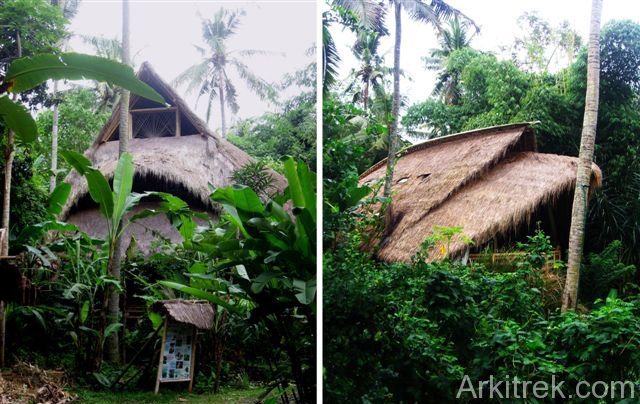

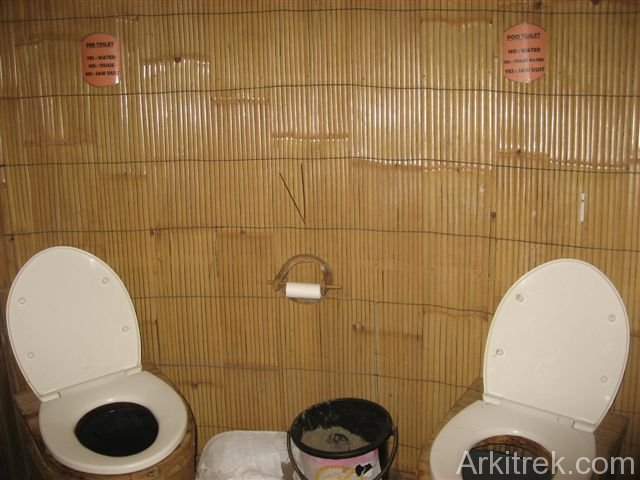
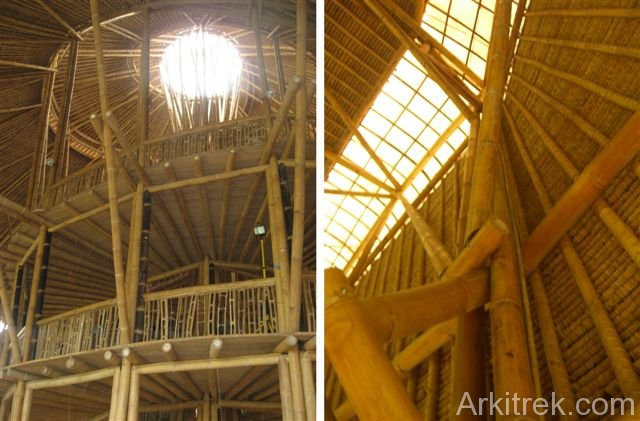
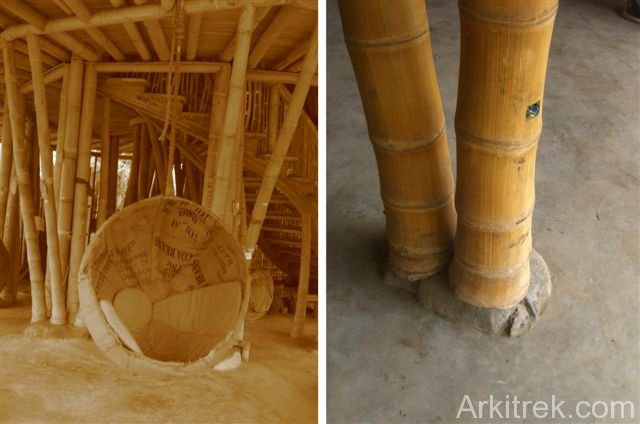
Related posts






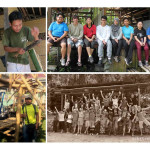
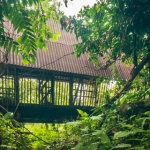
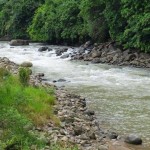

Love this piece, Sarah! My trip to the Green School has been inspiring and it’s lovely to see possibilities of it being done in Sabah.
Some bamboo photos from a trip to NE India https://plus.google.com/photos/104116746352730307825/albums/5689024909466331553?banner=pwa